

Trigger warnings: boundaries, survival, mental health, horror, scary, trauma, consent, consensual nonconsent, assault, permission, booktok, dark fantasy, BDSM
If you’ve spent anytime on #booktok, you know the concept of consensual non-consent. My goal with this post is to make sure all of our asses thoroughly understand it ethically. What it is and what is isn’t (*cough cough* I’m stank-eyeing you 50 Shades). In this post we’re going to talk about the history of consent structures and discuss why power dynamics/horror tropes can and sometimes do most definitely fall into this realm. First let’s look at different types of consent.
Types of consent (and the classic tea video explaining basic consent concepts):
Originating Consent: a term in philosophy that considers the cultures we navigate and the acceptable and unacceptable social norms. These change over time and within contexts.
Permissive Consent: What our boundaries look like within a given situation or context. According to Faith Harper, permissive consent is brought about in one of three ways:
(1) Explicit consent: this requires a ‘yes’ to be spoken. It is direct consent with active agreeing between parties with consistent check-ins.
(2)Implicit/Implied Consent: This type of consent is based on presumptions. In certain circumstances this works, in others not so much.
(3) Blanket/Opt-Out/Meta consent: Require that a ‘no’ be spoken. Norms have been established (that can be communicated if they do change) and parties have an understanding of these norms. An example of this type of consent is a safeword; we use a safeword to say we are done or that we need a break, to opt-out, that something is uncomfortable/unwanted pain, etc and expect it to be honored.
Within the BDSM/Kink world here are the following forms on consent:
SSC (Safe, Sane, Consensual): this was adopted to help differentiate between abuse and BDSM. All risks are discussed and known, everyone can consent and is capable of doing so and knowing the difference between fantasy and reality, and everyone involved can consent in the engagement mindfully and thoughtfully.
RACK (Risk Aware Consensual Kink): evolution to SSC that is acknowledging that some activities are not free of risk. Leans on personal accountability of taking on risk. Used mostly in activities where there is more of a risk at baseline. National Coalition on Sexual Freedom (NCSF) warns of potential legal repercussions of using this term due to admitting to knowing there might be risk involved.
PRICK (Personal Responsibility, Informed, Consensual Kink): more common at the end of the 2000’s and in response to concerns around RACK. This puts more accountability on all parties involved and not just the ‘dominant’ in the scene.
4C’s: Clear (involves enthusiastic, affirmative, and verbal* learn individual communication styles since it may not be verbal for everyone), Conscious (sober and aware), Continuous (revocable, ongoing), and (Free From) Coercion (safe, power & privilege, negative & positive consequences looked at).
The STARS Model: S(afety & Boundaries), T(urn-ons & Desires), A(voids & Hard No’s), R(elationship Intentions & Expectations), S(exual Health & Wellness).
Planned Parenthood describes consent with the FRIES model (Freely given, Reversible, Explicit, Informed, Enthusiastic, Specific)
So what is consensual non-consent specifically? It is a PRE-agreed, kink, power-play scenario between ethically, consenting adults of a ‘forced’ roleplay scenario. At any point consent can be withdrawn and boundaries are honored through out. It is never a scenario where someone is doing something they don’t want to do.
So which horror influences this realm the most? A lot of people would jump to Ghostface, Jason, even Michael Myers. There is also the overlap of monsters in general; pretty much anything you can think up. It’s really any character with a primal play potential dynamic. Primal Play is a type of BDSM that utilizes the predator/prey power dynamic; people who are getting chased through the woods by masked men with the goal of getting ‘caught’ is one example. The book Haunting Adeline (please read the trigger warnings) by H. D. Carlton is an example of this as well as the book Lights Out and several others. Most of these books fall into dark romance/fantasy. Even if we found what happens in the book hot or a turn-on, it doesn’t mean it needs to play out in real-life (fantasies can stay fantasies and still be fun and a turn-on) unless there is a trusted and willing accomplice(s) to do so with, boundaries have been established, and negotiation talks have been had previous to engagement or otherwise it isn’t consensual.
In the horror world, the characters of Ghostface and Jason are in this realm and the genre of Vampires (Dracula, Nosferatu, Eric Northman, Spike, etc) is probably one of the most popular type of this as well. Some horror wasn’t intended to spark this genre and grew out people’s response to certain characters and/or power dynamics and fantasies. That feeling a lot of us have had of….’wait, what is this sensation in response to this specific scenario?!’
The bottom line of this specific kink and power play dynamic is having communication around it before engaging in it to make sure there is trust, consent, and options to opt out. No one should be forcing others to engage in something if there is no consent, otherwise that is assault. It is also an absolute rule that costumes, clothing, and cosplays are in no way consent and people should be respected as such unless there is explicit conversations and communications around not doing so or engaging in an objectifying scenario.
Works Cited:
“AASECT Position Statement on Consent and Sexual Violence | AASECT:: American Association of Sexuality Educators, Counselors and Therapists.” Aasect.org, 2016, www.aasect.org/aasect-position-statement-consent-and-sexual-violence. Accessed 25 Aug. 2025.
Cascalheira, Cory J., et al. “Curative Kink: Survivors of Early Abuse Transform Trauma through BDSM.” Sexual and Relationship Therapy, vol. 38, no. 3, 15 June 2021, pp. 1–31, https://doi.org/10.1080/14681994.2021.1937599.
Confronting Partner Abuse in Activist Communities.
DACKER MD, EVELIN MOLINA. “STARS the STARS Model: A Framework for Transformational Conversations.” Wildwoman-Wellness.com, 2025, www.wildwoman-wellness.com/stars-consent-framework. Accessed 12 Sept. 2025.
Dunkley, Cara R., and Lori A. Brotto. “The Role of Consent in the Context of BDSM.” Sexual Abuse, vol. 32, no. 6, 22 Apr. 2019, pp. 657–678, https://doi.org/10.1177/1079063219842847.
Harper, Faith G. Unfuck Your Consent : A History and How-to for Claiming Your Sexual Autonomy, Personal Boundaries, and Political Freedom. Portland, Or, Microcosm Publishing, 2018.
Heidarpour, Alireza . “Masked Man Displaying Abs in Urban Setting,” Https://Www.pexels.com, 29 Nov. 2024, www.pexels.com/photo/masked-man-displaying-abs-in-urban-setting-2958094. Accessed 24 Aug. 2025.
Herbenick, Debby, et al. “Prevalence and Correlates of Sexual Choking and Consensual Non-Consent (CNC) among College Students: Findings from a Campus-Representative Survey.” Journal of Sex & Marital Therapy, vol. 51, no. 2, 31 Jan. 2025, pp. 1–19, https://doi.org/10.1080/0092623x.2025.2458173.
Nuñez, Aldair. “Scary Halloween Ghost Costume with Heart Gesture,” Pexels, 2 Nov. 2024, www.pexels.com/photo/scary-halloween-ghost-costume-with-heart-gesture-29213518. Accessed 24 Aug. 2025.
Planned Parenthood. “What Is Sexual Consent?” Planned Parenthood, 2021, www.plannedparenthood.org/learn/relationships/sexual-consent. Accessed 24 Aug. 2025.
Sage, Jessie. “In Consensual Non-Consent Fantasies, Context Is Everything.” Pittsburgh City Paper, 13 Mar. 2019, www.pghcitypaper.com/columns/in-consensual-non-consent-fantasies-context-is-everything-14057167. Accessed 26 Aug. 2025.
Schorn, Johanna . “50 Shades of BS – How to Tell the Difference between Kink and Abuse | Scarleteen.” Www.scarleteen.com, 2 Sept. 2013, www.scarleteen.com/about/announcements/50-shades-bs-how-tell-difference-between-kink-and-abuse. Accessed 24 Aug. 2025.
Sheff, Elisabeth. “Rising Interest in Consensual Non-Consent.” Psychology Today, 2025, www.psychologytoday.com/us/blog/the-polyamorists-next-door/202502/rising-interest-in-consensual-non-consent. Accessed 24 Aug. 2025.
THE PRIMAL PLAY REFERENCE GUIDE.
Vega, Aria. “Consent Frameworks Explained: S.S.C., R.A.C.K. & P.R.I.C.K. | Shibari Study Blog.” Shibaristudy.com, 3 Apr. 2024, shibaristudy.com/blog/post/consent-frameworks-explained-ssc-rack-and-prick. Accessed 24 Aug. 2025.
Wilde, Karolina . “Consensual Non-Consent: CNC Kinks Explained.” Natural Cycles, 8 Aug. 2024, www.naturalcycles.com/cyclematters/consensual-non-consent. Accessed 24 Aug. 2025.
Williams, D J, et al. “From “SSC” and “RACK” to the “4Cs” : Introducing a New Framework for Negotiating BDSM Participation.” Electronic Journal of Human Sexuality, vol. 17, 5 Aug. 2014, www.researchgate.net/publication/271854517_From_SSC_and_RACK_to_the_4Cs_Introducing_a_New_Framework_for_Negotiating_BDSM_Participation.
“From “Ssc” and “Rack” to the “4cs”: Introducing a New Framework for Negotiating BDSM Participation.” Electronic Journal of Human Sexuality, vol. 17, 1 Jan. 2014. Accessed 12 Sept. 2025.


Leave a Reply